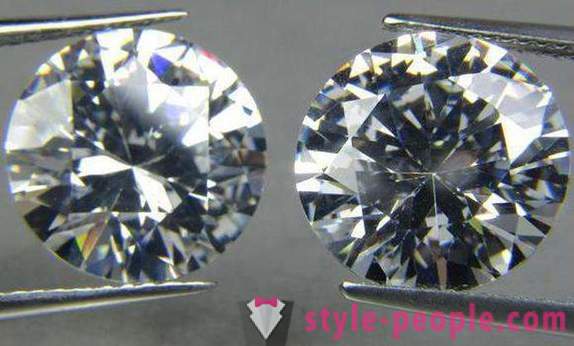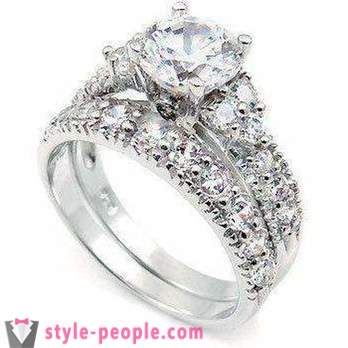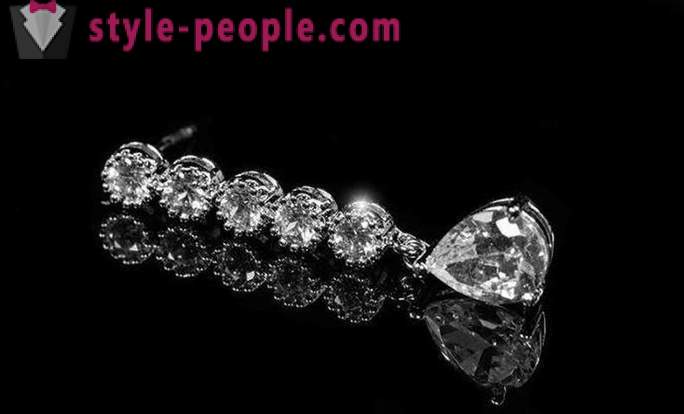How to distinguish phianites of diamonds at home
How to distinguish phianites of diamonds? Is it possible to do it at home? This is of concern to many. Let's take a closer look at these issues.
What is the cubic zirconia, and how it differs from the diamond?
How to distinguish phianites of diamonds? LPI - an artificial stone, which is made in the laboratory. This is his most important and defining Unlike diamonds or zircon, though outwardly it is very similar to them. Diamond - is subjected to special treatment in the form of diamond grinding and faceting, i.e. natural crystalline carbon. Unlike the diamond or diamond, cubic zirconia in its physical and chemical qualities and the structure is less hard and dense.
The first appearance of cubic zirconia
For the first time fianit was "grown" in the sixties of the last century in the Physics Institute of the USSR Academy of Sciences. It is in honor of the Research Institute of that it got its original name.
What's more - cubic zirconia or diamond? Here the answer is obvious. Despite the fact that cubic zirconia and diamond look very similar, their value is incommensurable. Fianit not considered a gem, and its value at the jewelry market in times less than the cost of diamonds.

The composition and properties of cubic zirconia
How to distinguish phianites of diamonds? According to their physico-chemical composition fianit - is zirconia of the cubic system. Unlike their natural counterparts, he could have a huge number of colors. In the initial original state fianit absolutely transparent and colorless. FIANITE color gamut depends on the content of various metals are added to the raw material during its production. For example, chromium gives cubic zirconia a greenish hue, Cerium - shades of red, yellow or orange spectrum, erbium gives pink, titata - Golden and neodymium - purple shades. Fianit, whose price is much lower than the price of a diamond is considered a unique material for the production of jewelry. The combination of elements in its production not only to simulate the unique diamonds, for example of black color, but also natural stones such as rubies, aquamarine, alexandrite, MORION, sapphire, topaz and citrine. Phianites in this respect are unique and can repeat the color scheme of any existing gems.
Fianit, whose price is quite acceptable, it is unique by the fact that it is in their optical quality surpasses even diamond, is what is important for jewelry, purity, depth, and excellent game.

Fianit and brilliant: the difference
Cubic zirconia and diamond, as noted above, have a completely different chemical composition and different physical-crystalline structure. The most important and determining the difference between a diamond and cubic zirconia - it is their hardness, although such a traditional way, as the ability to scratch glass, will not work. So as diamond, cubic zirconia and scratch the glass surface equally. The only possibility of their differences - is an attempt to carry on beyond the surface of cubic zirconia diamonds. Brilliant sure to leave its mark on the surface of the cubic zirconia.
Officially cut cubic zirconia and processing the difference between it and the diamond can be seen by their appearance. Traditionally, diamonds standard number of facets - fifty-seven, and they are characterized by sharp edges. It is fifty-seven facets allow to achieve the highest possible effect of the refraction of light inside the diamond. When cut cubic zirconia number of faces and surfaces generally smaller and the faces and edges more rounded and smoothed. For these external signs can immediately determine whether or not a precious stone or artificial. Perhaps the only absolutely sure way to determine the authenticity of the stone - a measurement and comparison of its thermal conductivity. But this method requires the use of special equipment and is only available to specialists.

How to distinguish cubic zirconia from diamonds at home?
How to distinguish phianites of diamonds at home? Another way to determine the authenticity of the stone, which can be used independently at home, if cubic zirconia diamond simulates the quantity and processing of faces - it is applying to the surface of the stone drops of fat or oil. On the surface of the gem drop is not modified and remains in its original state. A wrought on artificial stone bound FIANITE fat droplet will split into smaller particles or gather into small discrete droplets.
You can also try to attach a stone to glass using oil. If plastered stone oil sticks to the glass, it's brilliant, if not, then most likely it is cubic zirconia.

If you put fianit the text in a newspaper or in a book, then read it will be possible, by using a diamond can not do this. In this respect, also through fianit you can see the light, and a diamond is seen only one light point. In addition, a diamond in the sunlight shines stronger than cubic zirconia.
At stones of different thermal conductivity, so if you hold a diamond in your hand, it will remain cold and fianit quickly warms up. If you breathe in the cubic zirconia, it, unlike diamonds, zapoteet.
Since a diamond - a gem of natural origin, then it quite often there are small inclusions, surface irregularities, small defects, which practically can not be artificially created stone LPI.
Also, the difference between these stones - the ability to withstand aggressive chemical exposure. Therefore, hydrochloric acid leaves traces on the surface of cubic zirconia as spots, as diamond is not capable to cause any harm.













































